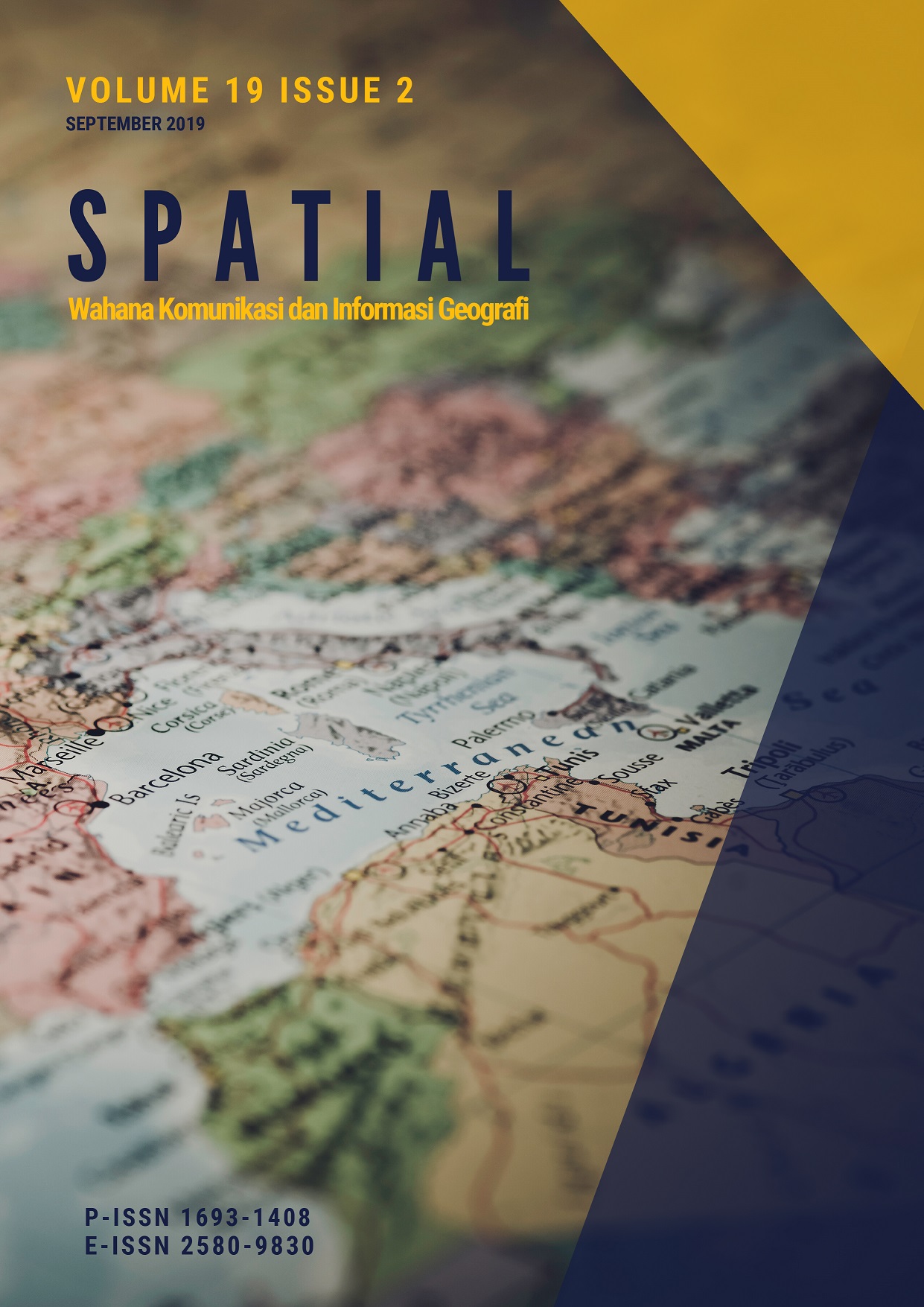The Use of Local Landscape as a Field Laboratory for Geography of Education
DOI:
https://doi.org/10.21009/spatial.192.1Keywords:
Potential, Local Landscape, Field Laboratory, Geography EducationAbstract
Geographical skills that need to be shared by each geographer in general are map skills, field skills, and satellite image interpretation skills. To achieve field skills competency, a location is needed to be used as material for practicum studies for each subject. The Geography Education Field Laboratory can be studied in depth based on an analysis of the level of learning needs. The basis of the lab location requirements as a laboratory is seen from the laboratory function as an area to carry out careful and accurate testing and measurement of the phenomenon under study. The study was carried out through the identification of local landscapes by delineating the area through the utilization of satellite citera, and identifying potential from each area that was chosen descriptively. In this study, the Gunung Galunggung area can be used as a Physical Field Laboratory for Geography and Kampung Naga Education can be used as a Field Laboratory for Social and Cultural Geography.
Downloads
Published
How to Cite
Issue
Section
License
An author who publishes in the journal SPATIAL Wahana Komunikasi dan Informasi Geografi agrees to the following terms:
Author retains the copyright and grants the journal the right of first publication of the work simultaneously licensed under the Creative Commons Attribution 4.0 License that allows others to share the work with an acknowledgement of the work's authorship and initial publication in this journal
Author is able to enter into separate, additional contractual arrangements for the non-exclusive distribution of the journal's published version of the work (e.g., post it to an institutional repository or publish it in a book) with the acknowledgement of its initial publication in this journal.
Author is permitted and encouraged to post his/her work online (e.g., in institutional repositories or on their website) prior to and during the submission process, as it can lead to productive exchanges, as well as earlier and greater citation of the published work (See The Effect of Open Access).
This work is licensed under a https://creativecommons.org/licenses/by/4.0/









